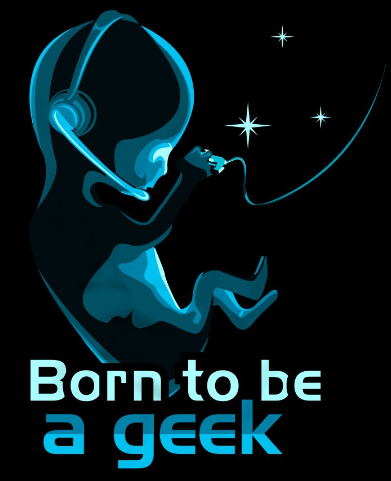Thinking Like a Millennial: How Millennials are Changing Discovery, Part Three
Editor’s Note: Tom O’Connor is a nationally known consultant, speaker, and writer in the field of computerized litigation support systems. He has also been a great addition to our webinar program, participating with me on several recent webinars. Tom has also written several terrific informational overview series for CloudNine, including his most recent one, Biggest eDiscovery Challenges Facing Plaintiff’s Attorneys, which we covered as part of a webcast on June 26. Now, Tom has written another terrific overview regarding the impact of millennials on eDiscovery titled Thinking Like a Millennial: How Millennials are Changing Discovery that we’re happy to share on the eDiscovery Daily blog. Enjoy! – Doug
Tom’s overview is split into five parts, so we’ll cover each part separately. Part one was last Tuesday, part two was last Friday, here is the third part.
Drivers for Millennials’ Thinking Today
Voting Studies
So, where do we learn more about this new generation? Most of the information we have on millennials comes from studies of their voting patterns and buying habits. In the first area the general assumption is that they are social loners who don’t vote. An estimated 31% of eligible people ages 18 to 29 voted in the 2018 midterms, according to the Center for Information and Research on Civic Learning and Engagement (CIRCLE). This exceeds participation from the same age group in the 2014 midterms by about 10 percentage points but is still far below the number that voted in the 2016 presidential election, when 51% of eligible millennial voters cast a ballot.
In the 2018 midterm, a poll released the week of the election by the Institute of Politics at Harvard Kennedy School, found four out of 10 adults under 30 said they would “definitely vote” and in Texas and Georgia, early turnout by 18-29 year olds was up by a whopping 500 percent in the days before the election, according to The Independent.
But the fact is that millennial voting rates have never exceeded 50%, even in 2018. According to a national poll last fall, just two-in-ten of America’s young adults consider themselves “politically engaged and active.” So far, only 41% of millennials ages 18-29 are certain they’ll vote.
But are they really isolated social loners intent only on gaming and texting? Why such low turnout when in the 1800’s 80% turnout was commonplace?
Maybe the reason isn’t the generation but the society. In the mid-1800s, transcendentalist Margaret Fuller envisioned the individualistic reality millennials now inhabit. Fuller believed that “American culture was best served by the influence of the self-cultivated individual.” If individuals prioritized themselves, America would fulfill its destiny as a truly democratic nation.
But as those ideal became reality, as individualism increases, each successive generation since World War II participates less in civic duties and governmental expectations. And so to the they are political, millennials are moved by measures championing personal choice—not society, country or planet. Only half of millennials see themselves as patriotic, and less than a third consider themselves to be environmentalists. Just 19% of millennials see themselves as generally trusting of others, compared to 40% of boomers. But we support gay and interracial marriage, abortion and marijuana legalization substantially—and sometimes exponentially—more than other generations.
Political engagement has been replaced by more direct social engagement A 2014 report on the impact of millennials revealed 87% donated money to an organization that supported a cause they supported.
Millennials do have a desire to make an impact for a good cause, they simply don’t see voting as the best mean to accomplish that.
Millennials in 2016 were significantly less likely to vote or try to influence others vote than were the ’80s generation in the 1987 survey, or the first wave of postwar baby boomers in 1967. BUT millennials display about the same level of political interest as the youngest generation did in 1987, and millennials contact local government and work with others in the community at essentially the same rates as did youth in the earlier surveys.
So, if the 1980s generation that was once considered apathetic is now, in middle age, actually more politically active than earlier generations were at that same stage in their lives then we can expect the same for millennials. The “participation gap”, which actually just appears under closer scrutiny, to be a reluctance to vote, might just indicate that “kids these days” – the millennials – just won’t participate more actively until later in life.
What does that mean for technology usage? That’s where marketing studies come in.
Marketing
We all “know” that millennials are mobile consumers tapping their mobile devices for hours each day and we’ve all seen or heard of research that indicates they spend more time interacting with their phones than other people but at the same time have short attention spans.
This may be because, as mentioned above, millennials appreciate tech as something they saw grow up while they did. They’ve seen numerous networks and devices come and go. Instagram, Pinterest, Snapchat and Tumblr, MySpace, Vine, Google+.
Given their comfort level with technology, they tend to favor services that offer practicality, utility, convenience and even fun. In short, millennials value technology when it delivers value.
Common characteristics of millennials that marketing studies have revealed include that they:
- Will Embrace New Technology
- Want to Create Opportunities for Good Causes
- Want Product to Support their Creativitity
- Want Innovation
- Want Product to “Speak their Language”
- Want Flexibility
- Want Personable Company
- Want Passionate Company
- Want to Be Valued as “Real”
- Want to Be Recognized
What we see in these studies is that the perception as being the next “me generation” is really a focus on personal rather than social validation. Millennials are the largest single generation in history and have become the largest influence in social and technological habits. They value utility, effectiveness and relationship over price and are undaunted by technological innovation.
We’ll publish Part 4 – Impact of Millennials on Legal Technology and eDiscovery – on Wednesday.
So, what do you think? Have the habits of millennials impacted eDiscovery for your organization? As always, please share any comments you might have or if you’d like to know more about a particular topic.

Sponsor: This blog is sponsored by CloudNine, which is a data and legal discovery technology company with proven expertise in simplifying and automating the discovery of data for audits, investigations, and litigation. Used by legal and business customers worldwide including more than 50 of the top 250 Am Law firms and many of the world’s leading corporations, CloudNine’s eDiscovery automation software and services help customers gain insight and intelligence on electronic data.
Disclaimer: The views represented herein are exclusively the views of the author, and do not necessarily represent the views held by CloudNine. eDiscovery Daily is made available by CloudNine solely for educational purposes to provide general information about general eDiscovery principles and not to provide specific legal advice applicable to any particular circumstance. eDiscovery Daily should not be used as a substitute for competent legal advice from a lawyer you have retained and who has agreed to represent you.








